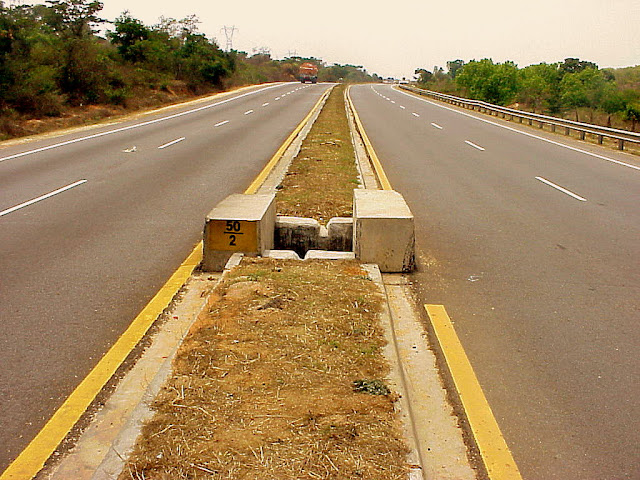Sudhir Gota
“In the age of carbon footprint we are forgetting human footprints”
I have collected few statistics and quotes on walkability. I am sure that these would derive a range of emotions from you – anger, surprise, despair, disgust, empathy etc….
Pedestrian facilities have been depreciating over the past decade. Cities which are naturally designed for walking are increasingly becoming motorized by vehicles. Travel time budgets are breaking new barriers with many people travelling for more than 2 hours a day and getting frustrated with the quality of transport. Everybody acknowledges that walkability is very important but however translating ideas to practice has been very slow. Pedestrian improvement projects provide cheap solution to the problem of urban mobility.
If the footpaths had been expensive, things would have been different !!
Statistics from CAI-Asia study on Walkability in Asian citiesPedestrian facilities have been depreciating over the past decade. Cities which are naturally designed for walking are increasingly becoming motorized by vehicles. Travel time budgets are breaking new barriers with many people travelling for more than 2 hours a day and getting frustrated with the quality of transport. Everybody acknowledges that walkability is very important but however translating ideas to practice has been very slow. Pedestrian improvement projects provide cheap solution to the problem of urban mobility.
If the footpaths had been expensive, things would have been different !!
- 82% of people in asia are willing to walk maximum of only 100m to access pedestrian crossings.
- If the walking environment is not improved, 82% of people would shift to vehicles
- About 40% of people consider that they are most exposed to air pollution while walking
- More than 70% of people in Kathmandu and Jakarta consider their walkways as bad or of poor quality
- In Asia, the budget for pedestrian facilities is often in the range of 0.2 to 5% of transportation budget while it accommodates more than 30% of trips.
- On an average 28% of trips are within 3 km, 24% within 3 to 6 km in an asian city
- Using the same money as required for constructing 1 km metro, one can, on average, construct 350 km of new quality sidewalks
- In a city, commercial areas have the best walkability whereas the public transport terminals have the worst walkability
Source : Times of India
Statistics from other sources
- In Sri Lanka, at least 1/10th of space of all roads within urban areas provided exclusively for non-motorized transport such as for sidewalks for walking and bicycle lanes (Action Plan for Traffic Management in Greater Colombo (2008))
- In Jakarta, people with disabilities must wear special signs that are visible to motorists - (Article 132 (3)) of Traffic and Road Transport Act of Indonesia
- 40% of the total Road Length of Delhi has no Sidewalks- RITES Transport Demand Forecast Study: May 2008
- Nearly half of fatal accidents in Delhi involve – pedestrians - Walkability Roundtable, Centre for Science and Environment, July 2009
- Nearly half of fatal accidents in Philippines and Bangladesh involve pedestrians - World Health Organization (WHO, 2009)
- Benefit-cost ratio of replacing the underground crossings with surface crossings is 7.6:1 – Transport for London
- 68% of countries in the world don’t have national or local level policies that promote walking and cycling - World Health Organization (WHO, 2009)
- In Bangalore, three pedestrians are killed on roads every other day and more than 10,000 are hospitalized annually- Deccan herald
- Children under ten years old are the most vulnerable pedestrian group in Thailand - Asian Institute of Technology
- 50% of people don’t use skywalks since it involves climbing, descending and long detour - D Sanyal, Bangalore Transportation Summit
- In Hong Kong only 13.5% of households have access to private vehicles – 2002, Transport Department
- In Hong Kong, 49% of people don’t walk due to unsuitable weather – 2002, Transport Department
- In Fushun, 58% of the survey respondents either agreed or strongly agreed that cars do not slow down at marked midblock crossings - Wendy Tao
- In 2009, more than 70% of road fatalities in Mumbai were Pedestrians - Mumbai Traffic Police
Other quotes
- “Restore human legs as a means of travel. Pedestrians rely on food for fuel and need no special parking facilities.” - Lewis Mumford quotes (American Writer, 1895-1990)
- Everywhere is walking distance if you have the time. ~Steven Wright
- No city should be too large for a man to walk out of in a morning. ~Cyril Connolly
- A pedestrian is someone who thought there were a couple of gallons left in the tank. ~Author Unknown
- Thoughts come clearly while one walks. ~Thomas Mann
- Walking: the most ancient exercise and still the best modern exercise. ~Carrie Latet
- Don't let people drive you crazy when you know it's in walking distance. ~Author Unknown
- All truly great thoughts are conceived by walking. - Friedrich Nietzsche
- "It is solved by walking." - Latin Proverb
- "Every trip starts and ends on foot" - ~Author Unknown
- improving walkability entails improvement not only in the physical infrastructure but equally in the minds of people - CAI-Asia (2010)
- Walking has important social benefits as well. More people walking on the streets is a signal that an area is safe and interesting. A prominent characteristic of vital urban neighborhoods is their vibrant pedestrian street life (Jacobs, 1961).
- Man is first and foremost a pedestrian ~Author Unknown
Depreciation in Trips
Virtually all the cities are showing depreciation in percentage of people using walking as a means of transport. Some cities show dramatic reductions in-spite of traffic models inconsistency to measure walking trips.





